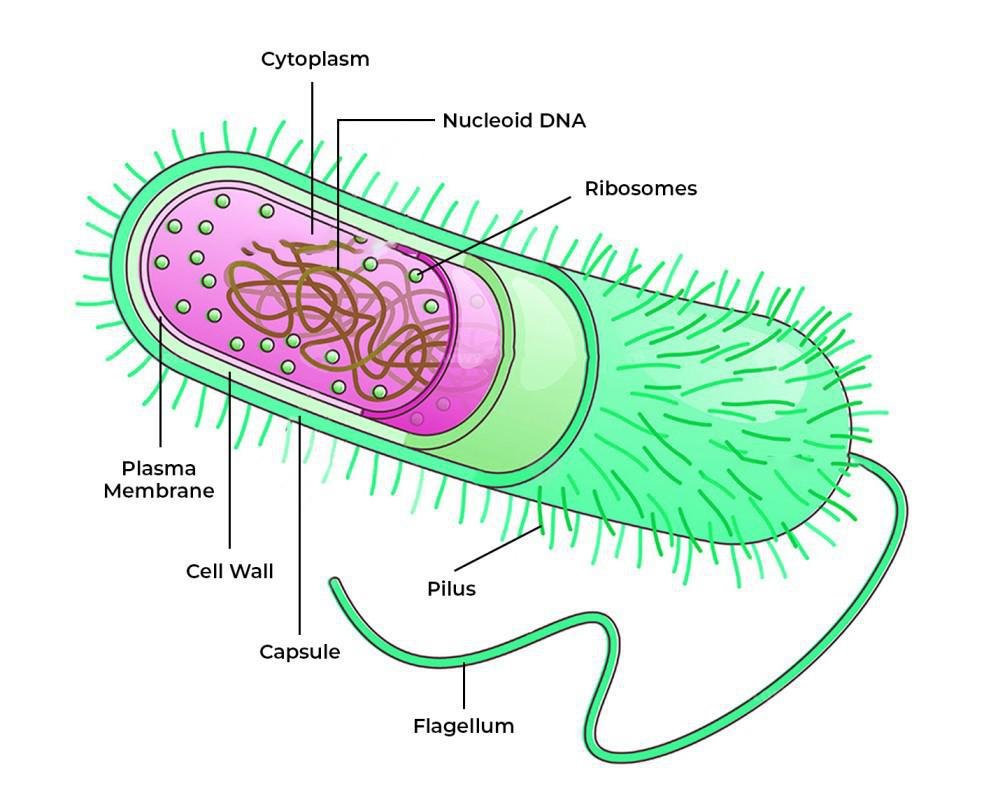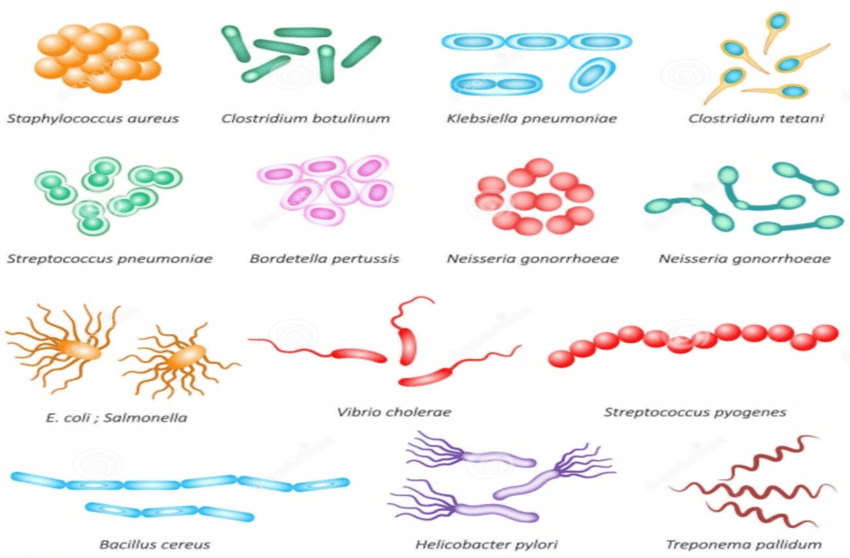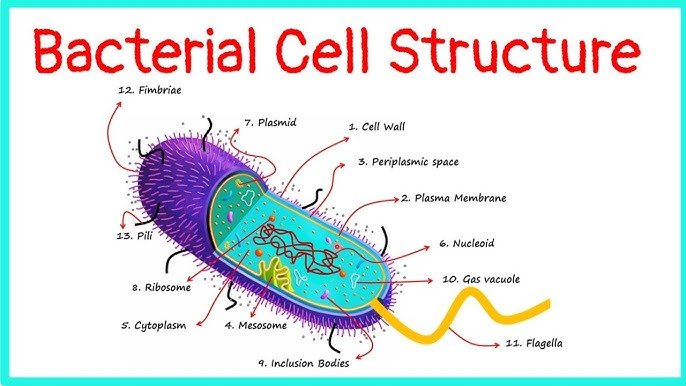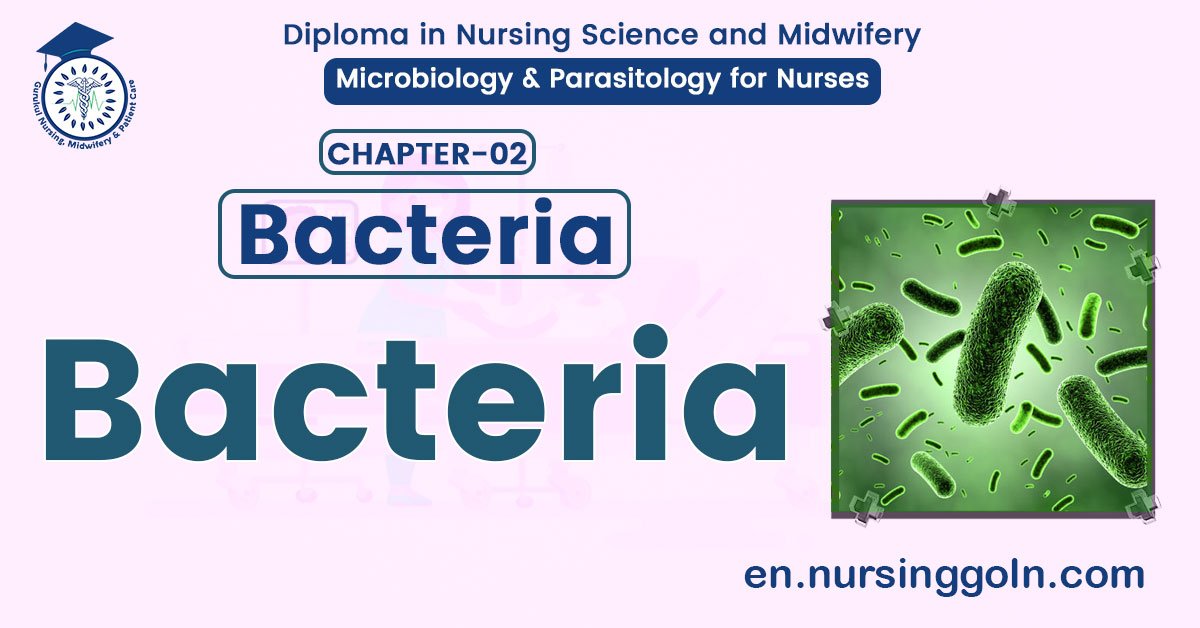Concept about Bacteria – Basic microbiology, parasitology, and immunology; nature, reproduction, growth, and transmission of common microorganisms and parasites in Bangladesh; prevention including universal precaution and immunization, control, sterilization, and disinfection; and specimen collections and examination. Students will have an understanding of common organisms and parasites caused human diseases and acquire knowledge about the prevention and control of those organisms.
Concept about Bacteria
Bacteria are single celled microbes. The cell structure is simpler than that of other organisms as there is no nucleus or membrane bound organelles. Instead their control center containing the genetic information is contained in a single loop of DNA. Some bacteria have an extra circle of genetic material called a plasmid. The plasmid often contains genes that give the bacterium some advantage over other bacteria. For example it may contain a gene that makes the bacterium resistant to a certain antibiotic.

Bacteria are classified into 5 groups according to their basic shapes: Spherical (Cocci), Rod (Bacilli), Spiral (Spirilla), Comma (Vibrio’s) or Corkscrew (Spirochaetes). They can exist as single cells, in pairs, chains or clusters.
Bacteria are found in every habitat on Earth: soil, rock, oceans and even arctic snow. Some live in or on other organisms including plants and animals including humans. There are approximately 10 times as many bacterial cells as human cells in the human body. A lot of these bacterial cells are found lining the digestive system.
Some bacteria live in the soil or on dead plant matter where they play an important role in the cycling of nutrients. Some types cause food spoilage and crop damage but others are incredibly useful in the production of fermented foods such as yoghurt and soy sauce. Relatively few bacteria are parasites or pathogens that cause disease in animals and plants.
Definition of Bacteria:
Single-celled microorganisms that can exist either as independent (free-living) organisms or as parasites (dependent on another organism for life) are known as bacteria.
Or
Bacteria are unicellular chlorophyll-free prokaryotic organisms, multiply by binary fission.
Bacteria were first observed by Antonie van Leeuwenhoek in 1676, using a single-lens microscope of his own design. He called them “animalcules” and published his observations in a series of letters to the Royal Society. The name bacterium was introduced much later, by Christian Gottfried Ehrenberg in 1838, and is derived from the Greek word bacterion, meaning “small staff”.
Or
Bacteria are microscopic, single-celled organisms that thrive in diverse environments. These organisms can live in soil, the ocean and inside the human gut.
Or
Bacteria are single celled microbes. The cell structure is simpler than that of other organisms as there is no nucleus or membrane bound organelles.
Classification of Bacteria:
A. Morphological classification;
a) Cocci; They are rounded. On the basis of their arrangement they are further classified into-
- Monococcus; They remain single.
- Diplococcus: They remain double.
- Streptococcus; They remain in chain form.
- Staphylococcus; They remain in cluster.
b) Bacilli; They are elongated rod like bacteria, e.g. E. coli.
c) Spirochaetes; They are spiral in shape, e.g. Treponema pallidum.
d) Vibrio; They are comma-shaped, e.g. Vibrio cholerae.

B. On the basis of Gram stain;
a) Gram positive; They are violet in colour on Gram stain
b) Gram negative; They are red in colour on Gram stain
C. On the basis of acid fast staining;
a) Acid fast; e.g. Mycobacterium tuberculosis
b) Non-acid fast; e.g. Streptococcus pyogens, E. coli & most of the bacteria
D. On the basis of spore formation;
a) Spore forming bacteria: e.g. Clostridium species, Bacillus species, Sporosercina etc.
b) Non-spore forming bacteria: e.g. Streptococcus pyogenes, Staphylococcus aureus and most of the bacteria
E. On the basis of oxygen requirement: Bacteria can be classified into following groups on O_{2} requirement;
a) Obligate aerobe; They require O_{2} and cannot survive without O_{2} Example; Pseudomonas, Mycobacterium tuberculosis.
b) Facultative anaerobe; Grows with or without O_{2} Example; Staphylococci, Esch coli.
c) Obligate anaerobe: Grows only in absence of O_{2} They cannot live in the presence of O_{2} Example; Clostridium species.
d) Aerotolerant anaerobe; Grows in presence of O_{2} but does not use it.
e) Micro-aerophilic; Grows in low oxygen concentration,
Example; Campylobacter jejuni, Helicobacter pylori.
F. On the basis of position in the host cells:
a) Obligate intracellular: They remain only within the host cells, e.g. Rickettsia & Chlamydia.
b) Extracellular: They remain outside the host cell, e.g. most of the bacteria.
G. On the basis of temperature:
a) Psychrophilic bacteria: Grow best at low temperature (15°-20°C).
b) Mesophilic bacteria: Grow best at body temperature (30° – 37°C). c) Thermophilic bacteria: Grow best at high temperature (50° – 60°C).
H. On the basis of presence of cell wall:
a) Bacteria having cell walls: e.g. most of the bacteria.
b) Bacteria lacking cell wall: e.g. mycoplasma.
Structures of a Bacterial Cell


Figure: Structures of a Bacterial Cell
Components/Elements/Constituents of a Bacterial Cell:
Essential components
| Essential Components | Function/Importance |
| Cell wall | 1. Give rigid support. 2. Protects against osmotic pressure 3. It is the site of action of penicillins, cephalosporins and is degraded by lysozyme. 4. In Gram negative bacteria, lippolysaccharide of outer membrane acts as endotoxin. |
| Cytoplasmic membrane | 1. It is the site of oxidative and transport enzymes. |
| Ribosome | 1. Protein synthesis. 2. Site of action of aminoglycosides, erythromycin, tetracyclines & chloramphenicol. |
| Nucleoid | 1. Contains genetic materials. |
| Mesosome | 1. Participates in cell division & secretion |
| Periplasm (In Gram negative bacteria) | 1. Contains many hydrolytic enzymes, including B- lactamases. |
Non-Essential/Accessory Components:
| Non-Essential Components | 1.Function/Importance |
| Capsule | 1.Protects against phagocytosis |
| Pilus/Fimbria | 1.Two types; ✔Mediates attachment to host cell surfaces’ ✓ Sex pilus mediates attachment of two bacteria during conjugation. |
| Flagellum | 1.Motility |
| Spore | 1.Provides resistance to dehydration, heat & chemicals. |
| Plasmid . | 1.Contains a variety of genes for antibiotic resistance & toxins |
| Granule | 1.Site of nutrients in cytoplasm. |
| Glycocalyx | 1.Mediates adherence to host cell surface. |

Definition of Enveloped Bacteria;
The structures that surround the bacterial cell are collectively called envelop of bacteria.
Component of Gram-positive bacterial envelope –
- Cytoplasmic membrane
- Cell wall (composed of peptidoglycan)
- Capsule in some cases.
Component of Gram negative bacterial envelope :
- Cytoplasmic membrane
- Cell wall
- Peptidoglycan layer
- Outer membrane
- Capsule lin some cases
Read More….
